Introduction – Why Smart Homes Are the Future
In 2025, the concept of a smart home has moved from luxury to necessity for many households. As technology continues to evolve, smart homes are becoming more affordable, efficient, and deeply integrated into everyday life. From controlling lights and fans through voice commands to securing your home remotely with smart cameras, smart home technology is changing how we live.
One of the main reasons smart homes are the future is the growing need for convenience and automation. In today’s fast-paced world, people want their homes to work for them. Smart devices like virtual assistants, smart plugs, automated lighting systems, and smart thermostats help streamline daily tasks, saving time and energy. Whether you’re cooking, working, or relaxing, smart devices can be controlled through your phone or voice, making life easier and more efficient.
Another major benefit of a smart home is energy efficiency. Devices like smart bulbs, motion sensors, and automated power controls help reduce electricity consumption, leading to lower utility bills and a more sustainable lifestyle. Smart homes are not only good for the environment but also for your wallet.
Security is also a key factor. With smart locks, doorbell cameras, and motion sensors, you can monitor your home from anywhere. This level of control and visibility provides peace of mind that traditional systems simply cannot offer.
In 2025, smart home technology is no longer just for tech enthusiasts. It’s for families, professionals, and anyone looking to simplify life. As more devices become compatible and AI integration improves, the smart home trend is only expected to grow. Setting up a smart home is an investment in comfort, safety, and the future. It’s not just about gadgets—it’s about creating a smarter way to live.
What You Need Before Setting Up a Smart Home
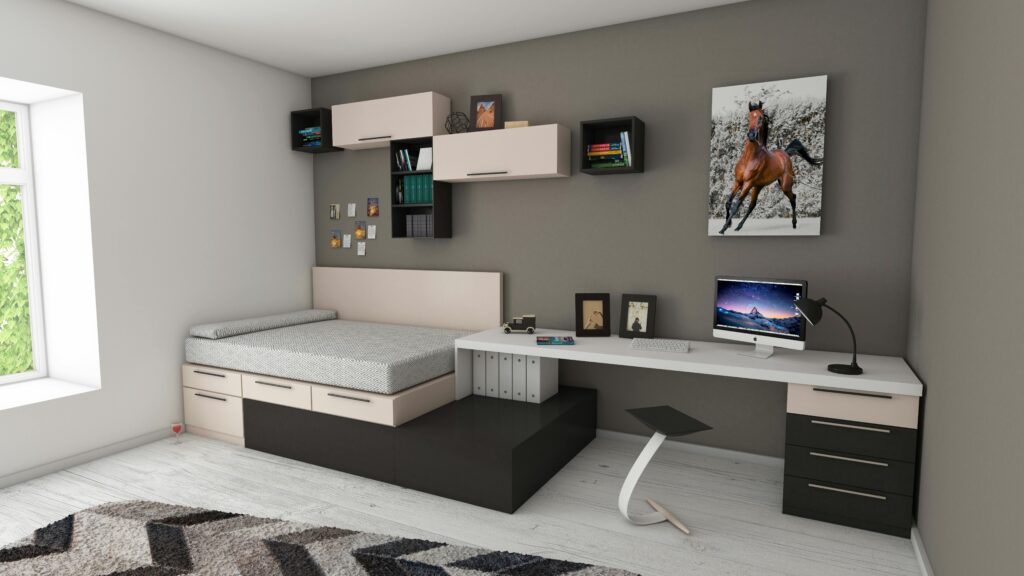
Before you begin building your smart home in 2025, it’s essential to understand what you actually need to get started. A smart home setup doesn’t have to be expensive or complicated, but having the right foundation ensures everything works smoothly and efficiently. Whether you’re a beginner or upgrading from basic automation, starting with the right components and planning is crucial.
The first thing you need is a reliable internet connection. Since all smart devices communicate via Wi-Fi or a local network, a high-speed and stable internet connection is the backbone of any smart home. If your Wi-Fi is weak or inconsistent in some areas of the house, consider investing in a mesh Wi-Fi system for broader coverage.
Next, choose your smart home ecosystem. The most popular platforms are Amazon Alexa, Google Home, and Apple HomeKit. Selecting one early helps avoid compatibility issues later. Your choice will also determine which voice assistant you use and what devices will work best together.
You’ll also need a smartphone or tablet for setting up and controlling devices. Most smart home gadgets are managed through apps, and initial setup is usually done through mobile configuration.
Having smart-ready appliances or at least a few smart devices like bulbs, plugs, or a smart speaker is a good starting point. You don’t need to buy everything at once—start small and expand over time.
Don’t forget security. Before adding smart locks or cameras, make sure your Wi-Fi is protected with a strong password, and update firmware regularly.
Finally, plan your home layout. Know where you want to install smart lights, sensors, or cameras. A little planning goes a long way in building a smart home that truly simplifies your life rather than adding frustration.
Choosing the Right Smart Home Ecosystem (Alexa vs Google vs Apple)
When setting up a smart home in 2025, one of the most important decisions is choosing the right ecosystem. This choice will determine how all your devices connect, communicate, and function together. The three leading smart home platforms today are Amazon Alexa, Google Home, and Apple HomeKit. Each has its own strengths, and picking the right one depends on your devices, preferences, and overall tech environment.
Amazon Alexa is known for its wide compatibility and affordability. With support for thousands of smart devices, Alexa makes it easy to build a connected home. Its smart speakers like Echo Dot and Echo Show are widely available and easy to set up. Alexa also allows you to create routines, control multiple devices with a single voice command, and even integrate with smart home brands at lower cost. It’s ideal for users who want flexibility and support for a wide range of gadgets.
Google Home, powered by Google Assistant, shines when it comes to natural voice interaction and deep integration with Google services like Gmail, Calendar, and Maps. If you use Android phones or Google products heavily, Google Home can feel more intuitive. Devices like Google Nest Hub or Nest Mini provide great visual feedback and smart display features that are helpful in kitchens or bedrooms.
Apple HomeKit is the best option for those deeply invested in the Apple ecosystem. It emphasizes privacy, security, and seamless integration with iPhones, iPads, and Macs. Features like automation via the Home app and control through Siri are smooth and reliable. However, Apple’s HomeKit-compatible devices are generally more expensive, and the selection is slightly more limited compared to Alexa and Google.
Ultimately, the best smart home ecosystem is the one that works best with your existing devices and daily routine. It’s important to stay within one ecosystem to avoid compatibility issues. Whether you go with Alexa, Google, or Apple, each offers a solid foundation for building a smart and responsive home.
Must-Have Smart Devices for Beginners
Starting your smart home journey in 2025 doesn’t mean you need to invest in expensive or complicated gadgets. In fact, there are several beginner-friendly smart devices that are affordable, easy to install, and make a noticeable difference in daily life. These essential smart devices can help automate tasks, improve energy efficiency, and enhance convenience, making your home smarter one step at a time.
One of the first and most useful devices is a smart speaker or smart display. Devices like the Amazon Echo Dot, Google Nest Mini, or Apple HomePod Mini serve as the control center for your smart home. They allow you to control other devices with voice commands, ask questions, set reminders, and even stream music or news. A smart speaker is a must-have for beginners because it makes managing your home hands-free and simple.
Smart bulbs are another great starting point. These Wi-Fi-enabled lights can be turned on or off remotely, scheduled to turn on at specific times, or even change colors to suit your mood. They are energy-efficient, easy to set up, and compatible with all major ecosystems. Installing smart bulbs in living rooms, bedrooms, or entryways is a quick way to start your smart home setup.
Smart plugs are ideal for making your non-smart appliances smarter. Simply plug in a lamp, coffee maker, or fan into a smart plug, and you’ll be able to control it through an app or voice command. They’re inexpensive and useful for automating everyday appliances without replacing them.
A smart doorbell or camera can enhance your home’s security. Devices like Ring Doorbell or Google Nest Cam let you see who’s at your door, get motion alerts, and monitor your home remotely from your phone.
These basic smart devices are beginner-friendly, affordable, and work as the perfect entry point to a full smart home setup. Starting small with the right gadgets helps you build confidence and expand your smart home gradually.
Smart Lighting Setup for Home Automation
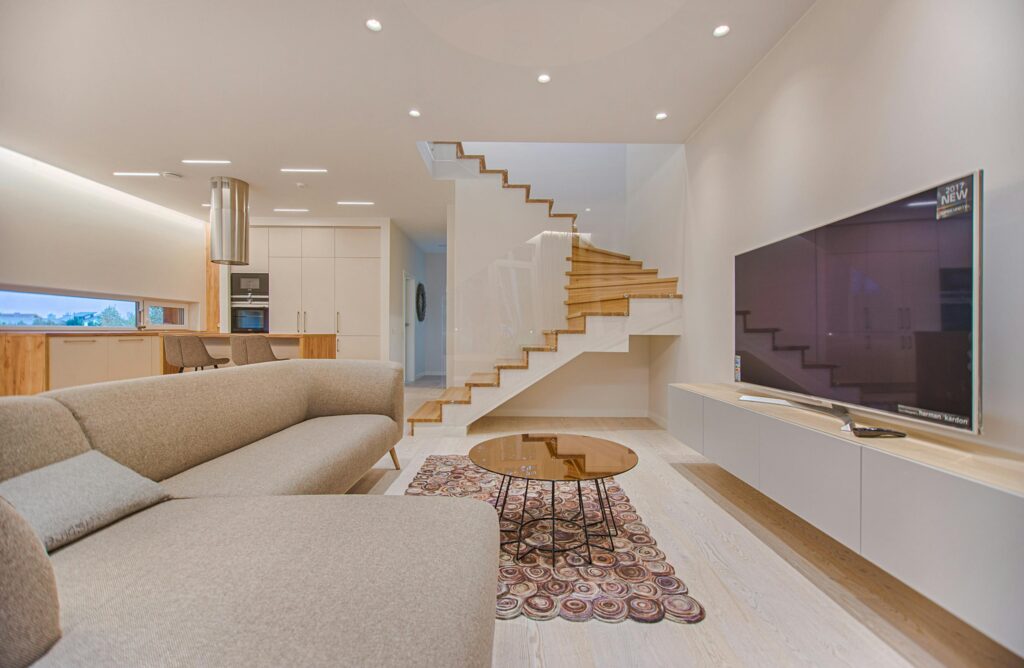
Smart lighting is one of the easiest and most impactful ways to begin automating your home in 2025. It not only enhances convenience and ambiance but also helps save energy and improve home security. Whether you’re upgrading a single room or your entire house, a smart lighting setup can transform how you interact with your living space.
To start with smart lighting, the most beginner-friendly option is using smart bulbs. These are LED bulbs with built-in Wi-Fi or Bluetooth that connect to your smartphone via a mobile app. Popular options include Philips Hue, Wipro, Mi, and TP-Link. You can adjust brightness, set schedules, and even change the color of the lights to suit your mood or time of day.
If you’re looking to automate existing lights without changing the bulbs, smart switches are a great solution. These replace your regular wall switches and allow you to control multiple lights through voice commands or apps. Smart switches are ideal for living rooms, kitchens, and main lighting zones where multiple bulbs are connected to one switch.
Another simple yet effective addition is smart motion sensors. These sensors can automatically turn on lights when someone enters a room and switch them off when the room is empty. They are perfect for hallways, bathrooms, and staircases to save energy and add convenience.
Smart lighting works best when combined with routines and automation. For example, you can create a routine that dims the lights in the evening, switches them off when you leave the house, or gradually brightens them in the morning as a natural alarm. Voice assistants like Alexa, Google Assistant, or Siri can control lights with simple commands.
Setting up smart lighting doesn’t require a complete overhaul. Start with one room or zone and gradually expand. With the right combination of smart bulbs, switches, and sensors, you can enjoy a seamless and energy-efficient lighting experience throughout your home.
Smart Plugs & Switches – Simple But Powerful Upgrades
Smart plugs and switches are among the most underrated yet powerful tools in any smart home setup. In 2025, these devices offer an easy and affordable way to bring automation to your existing appliances and lighting systems without replacing them. For beginners and even experienced users, smart plugs and switches can dramatically increase convenience, energy efficiency, and control over everyday electronics.
A smart plug is a compact device that plugs into your existing power socket. Once connected, you can plug in almost any traditional appliance—like a fan, lamp, coffee maker, or water pump—and control it using your smartphone or voice assistant. You can turn devices on or off remotely, set schedules, or even monitor energy consumption, depending on the model. This is especially helpful for automating appliances that don’t need to run all day or for adding basic smart control to non-smart gadgets.
Smart switches, on the other hand, replace traditional wall switches and provide app-based or voice control over the lights or fans wired to them. They’re ideal for spaces like living rooms, bedrooms, or kitchens where multiple lights are connected to a single switch. Once installed, you can control the lights using your phone, schedule them to turn on at sunset, or turn them off automatically when you leave home.
One of the biggest advantages of smart plugs and switches is their ease of installation. Most smart plugs require no tools or rewiring—just plug and play. Smart switches may need basic electrical knowledge or help from a professional, but once installed, they become a permanent upgrade.
These devices are also compatible with all major smart home ecosystems, including Amazon Alexa, Google Assistant, and Apple HomeKit. This means you can integrate them into larger routines and scenes, like turning off all lights and plugs with a single command before bedtime.
Overall, smart plugs and switches are small investments that offer big returns in terms of control, comfort, and energy savings—making them a must-have in any smart home setup.
Smart Security: Cameras, Doorbells & Locks
In 2025, smart security has become a crucial part of any smart home setup. With increasing concerns about home safety, break-ins, and package theft, devices like smart cameras, video doorbells, and smart locks provide real-time protection, convenience, and peace of mind. These tools not only help you monitor your home from anywhere but also give you complete control over who enters your space and when.
Smart security cameras are a great starting point. These devices allow you to keep an eye on both the inside and outside of your home through live video feeds on your smartphone. Most smart cameras come with motion detection, two-way audio, night vision, and cloud or local video storage. Whether you’re at work or traveling, you can monitor your home in real time, get instant alerts, and review recorded footage if something unusual happens.
Smart video doorbells take home security to the next level. Devices like the Ring Doorbell or Google Nest Doorbell let you see, hear, and speak to visitors right from your phone. They alert you when someone rings the bell or even approaches your front door, offering live video and audio. This feature is especially helpful for monitoring deliveries, checking for unknown visitors, and preventing package theft.
Smart locks offer both convenience and control. You can lock or unlock your door remotely, create digital keys for family members or guests, and even schedule automatic locking at night. Many models also offer fingerprint access, keypad entry, and integration with voice assistants like Alexa or Google Assistant. With smart locks, there’s no need to carry keys or worry about lost copies.
The best part about smart security devices is that they can all be connected within your chosen smart home ecosystem. You can automate actions like turning on lights when motion is detected, or locking all doors when you say “Goodnight.” These powerful upgrades not only improve security but also make your home smarter and more responsive to your needs.
How to Automate Daily Tasks Using Routines & Schedules
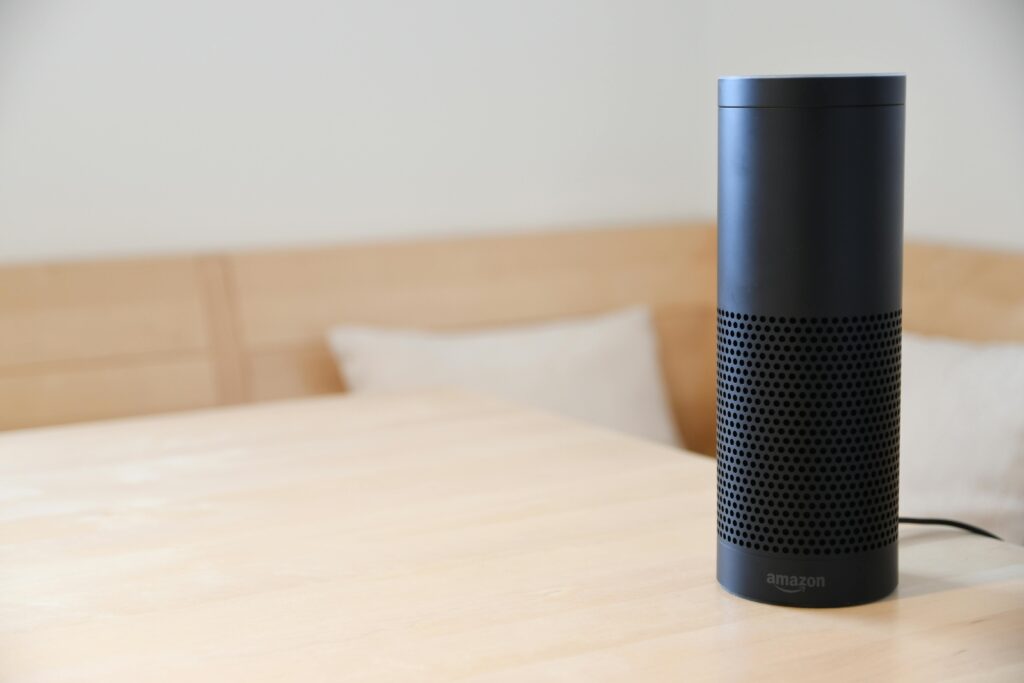
One of the biggest advantages of setting up a smart home in 2025 is the ability to automate your daily tasks using routines and schedules. Instead of manually controlling every device, you can create custom triggers that make your home work for you—saving time, improving comfort, and increasing efficiency. Whether it’s turning off the lights at night or brewing your coffee in the morning, smart automation can handle it all.
Routines are pre-set actions triggered by specific events or commands. For example, you can create a “Good Morning” routine that turns on the bedroom lights, reads the weather, and starts your smart coffee maker when you say “Good Morning” to your voice assistant. Similarly, a “Good Night” routine can turn off all the lights, lock the doors, and lower the thermostat with a single voice command or at a specific time.
Schedules, on the other hand, are time-based automations. You can set smart lights to turn on at sunset or off at 11 PM daily. Smart plugs can power off unused devices at night, while smart sprinklers can be scheduled to water the garden in the early morning. These schedules help maintain consistency in your home and can also save energy.
Most ecosystems like Alexa, Google Home, and Apple HomeKit offer easy-to-use apps for creating and managing these automations. You can customize routines based on location, time, device status, or voice input. For example, your smart lights can turn off automatically when you leave home using your phone’s GPS.
Automation doesn’t need to be complex. Start with simple tasks—like automating lights or fans—and gradually expand. Over time, you’ll find that routines and schedules take the hassle out of repetitive chores, allowing your smart home to adapt to your lifestyle without manual effort. It’s one of the most practical and powerful benefits of home automation.
Voice Assistants and Their Role in Smart Homes
Voice assistants have become the heart of every smart home in 2025. With just a simple voice command, you can control lights, play music, check the weather, manage your calendar, and even lock your doors. These AI-powered tools have transformed how we interact with technology at home, making everyday tasks faster, more convenient, and completely hands-free.
The most popular voice assistants today are Amazon Alexa, Google Assistant, and Apple’s Siri. Each of these works as the central hub of a smart home ecosystem, connecting with other devices like smart lights, plugs, thermostats, security cameras, and more. Once connected, you can use your voice to manage your entire home environment from one place.
For example, saying “Turn off all the lights” can instantly switch off every smart bulb in the house. You can ask “What’s the weather today?” while getting dressed or say “Good night” to trigger a routine that locks the doors, dims the lights, and sets your morning alarm. Voice assistants help make your smart home responsive and intelligent, without needing to touch a phone or switch.
Another major benefit is accessibility. For elderly or differently-abled users, voice control provides an easy and independent way to control household devices. It removes the need for physical interaction, making homes more inclusive and safer.
Voice assistants also continue to evolve. In 2025, they are more context-aware, capable of handling follow-up questions, and better at understanding multiple languages and accents. Many now offer personalized responses, learning your preferences over time for a more tailored experience.
Whether you choose Alexa, Google Assistant, or Siri, a voice assistant adds real-time control and intelligence to your smart home. It’s not just about convenience—it’s about creating a connected space that responds to your lifestyle naturally and efficiently.
Tips to Ensure Privacy & Data Security in a Smart Home
As smart homes become more common in 2025, protecting your privacy and securing your data is more important than ever. With dozens of connected devices—like cameras, voice assistants, smart locks, and lights—your home constantly communicates through the internet. While this brings convenience, it also opens the door to potential privacy risks if not managed properly.
The first step to securing your smart home is to set up a strong and unique Wi-Fi password. Since all your devices connect through your home network, any weakness here can expose everything. Use a mix of letters, numbers, and symbols, and avoid common passwords. Also, consider using a separate network or guest Wi-Fi for smart devices to isolate them from your personal data.
Keep your devices updated regularly. Most smart home brands release firmware updates that fix bugs and patch security issues. Enabling automatic updates or checking the device app regularly helps you stay protected against the latest threats.
Enable two-factor authentication wherever possible. Many smart home apps offer this feature, adding an extra layer of protection by requiring a second step—like an SMS code or app notification—when logging in.
Be cautious with third-party integrations. While adding more skills and features to your smart home may seem attractive, connecting too many services can create more access points for hackers. Only enable trusted skills or apps from verified sources.
If you’re using voice assistants, review and manage your voice history and permissions regularly. Most platforms allow you to delete recordings or limit data collection through privacy settings in the app.
Finally, monitor your device activity and usage. If a device behaves strangely or shows signs of unauthorized access, disconnect it and reset it immediately.
Smart homes are meant to offer convenience, but not at the cost of your security. With the right precautions, you can enjoy the benefits of a connected home while keeping your personal data safe and private.
Estimated Budget for a Smart Home Setup in 2025
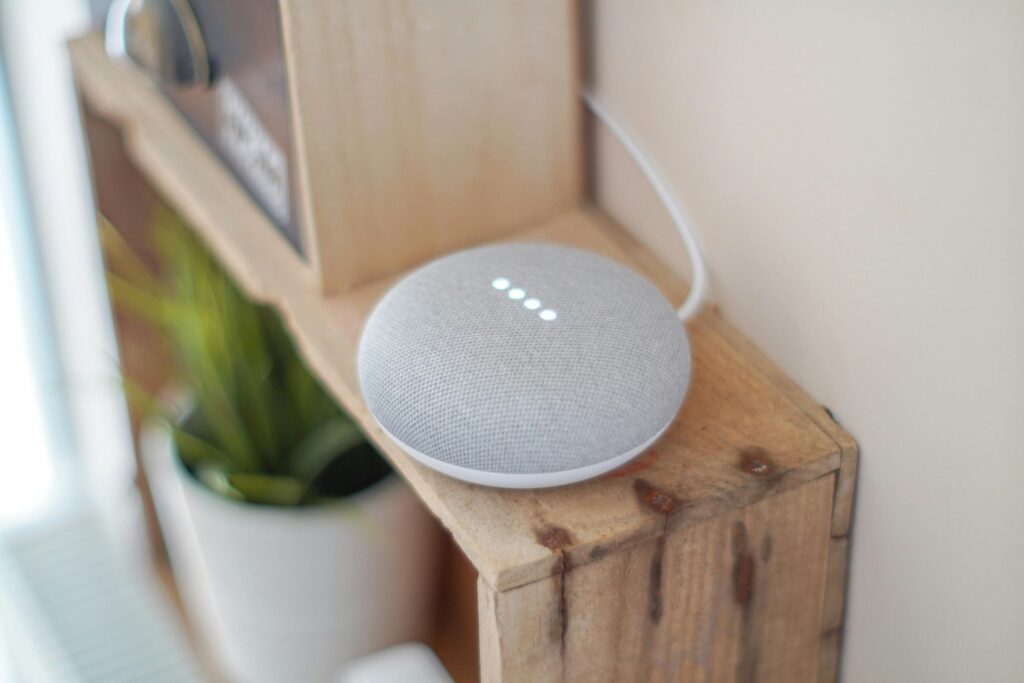
Setting up a smart home in 2025 is more affordable and flexible than ever before. Whether you’re on a tight budget or planning a premium setup, there’s a wide range of devices and options available to match your needs. The total cost depends on how many rooms you want to automate, the type of ecosystem you choose, and whether you prefer basic controls or advanced automation.
For a basic smart home setup, you can get started with as little as ₹10,000 to ₹15,000. This budget can typically cover:
- A smart speaker (like Echo Dot or Google Nest Mini): ₹3,000–₹5,000
- A couple of smart bulbs: ₹500–₹1,000 each
- 1–2 smart plugs: ₹800–₹1,200 each
- Basic app control and voice automation features included
This level of setup gives you essential voice control, smart lighting, and automation for small appliances, ideal for beginners and small apartments.
For a mid-range setup, the budget expands to ₹25,000–₹50,000. With this range, you can add:
- Multiple smart bulbs across rooms
- Smart switches for wall control
- A smart doorbell camera
- A smart lock or basic home security camera
- Possibly a smart display like Echo Show or Nest Hub
This configuration offers better integration, security features, and hands-free control throughout the home.
If you’re aiming for a premium or full-home automation setup, the budget can go beyond ₹75,000 to ₹2,00,000 or more. In this range, you can include:
- Full-room lighting automation
- Smart thermostats, curtain controllers, and sensors
- Complete indoor/outdoor camera setup
- Advanced smart locks and alarm systems
- Central hub integration with Apple HomeKit, Alexa, or Google Home
You can also factor in professional installation costs if you choose wired smart switches, door locks, or cameras.
Ultimately, a smart home setup is scalable. You can start small and gradually add devices over time. The key is to plan your ecosystem well and invest in reliable brands to ensure long-term value and compatibility.
Future Trends in Smart Home Technology
As we move deeper into 2025 and beyond, smart home technology is evolving rapidly, reshaping the way we live, interact, and manage our households. What began with smart bulbs and voice assistants is now expanding into intelligent, AI-driven systems that understand habits, adapt to preferences, and enhance comfort, efficiency, and security.
One of the biggest future trends is the rise of AI-powered automation. Smart homes are becoming more intuitive by learning user behavior and making decisions without manual input. For example, lights and fans will adjust automatically based on your routine, and smart thermostats will optimize temperature by tracking your preferences and weather changes.
Another major shift is toward inter-device communication using Matter protocol—a universal smart home standard supported by Apple, Google, Amazon, and others. This allows devices from different brands to work seamlessly together, solving the compatibility issues that early users often faced. With Matter, setting up a smart home is becoming more plug-and-play.
Energy efficiency and sustainability are also key trends. Smart homes are increasingly focused on reducing energy use through automated lighting, intelligent energy monitors, and solar-compatible appliances. Users can track power consumption in real time and get suggestions to lower bills.
The integration of health and wellness tech is growing fast. Smart air purifiers, sleep trackers, posture monitors, and indoor climate sensors are being added to the home environment to promote better health and lifestyle habits.
Voice assistants are evolving into multi-modal controllers, combining voice, gesture, and touch for more natural interaction. At the same time, privacy-focused features are being built into devices to allow users more control over data.
In the near future, smart homes will no longer be a collection of connected gadgets—they’ll act as a unified, responsive system that understands your lifestyle and anticipates your needs. The future of smart home technology is not just smart—it’s becoming truly intelligent.
Conclusion – Making Your Home Smarter, Step by Step
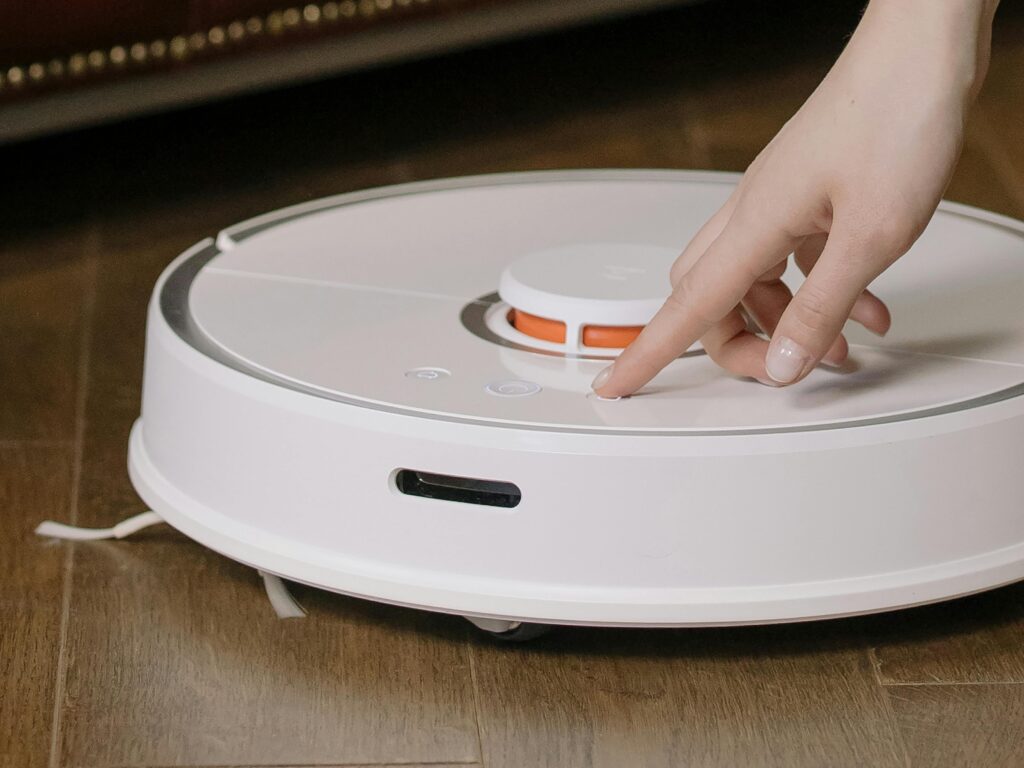
Building a smart home in 2025 doesn’t require a massive investment or complex technical knowledge. It’s a journey that can begin with just a few basic devices and grow into a fully connected living experience over time. By starting small—perhaps with a smart speaker, a few smart lights, or a smart plug—you can gradually transform your everyday routine into something more efficient, convenient, and intelligent.
The key to a successful smart home setup is planning and consistency. Choosing the right ecosystem early on ensures that all your devices work together seamlessly. Whether you prefer Alexa, Google Assistant, or Apple HomeKit, sticking with one platform helps you build a smoother, more responsive system.
From automating your morning routine to securing your home remotely and saving energy through intelligent scheduling, smart home technology has endless possibilities. As voice assistants become smarter, AI-driven automation gets more advanced, and device compatibility improves with standards like Matter, managing your home will become easier and more personalized than ever before.
Security and privacy should also be a top priority. As you expand your setup, make sure your Wi-Fi is secure, your devices are updated, and you’re only using trusted apps and services.
In the end, a smart home is not about having the latest gadgets—it’s about creating a space that understands and adapts to your lifestyle. By upgrading your home step by step, you gain control, comfort, and peace of mind, all while embracing the future of living. Whether you’re a beginner or tech-savvy user, the right approach can make your home truly smart in every sense.
Also Read: RCS vs iMessage: The Ultimate Messaging War 2025
Frequently Asked Questions – Smart Home Setup in 2025
1. What is a smart home and how does it work?
A smart home uses internet-connected devices to automate and control various household systems like lighting, security, appliances, and climate. These devices are typically controlled through apps, voice assistants, or automated routines.
2. Can I set up a smart home without rewiring my house?
Yes, most smart home devices in 2025 are wireless and plug-and-play. You can use smart plugs, bulbs, and hubs that don’t require any rewiring or professional installation.
3. Which is better for smart home control: Alexa, Google Assistant, or Siri?
All three platforms are powerful. Alexa offers the widest compatibility, Google Assistant is best for natural voice commands and Android integration, and Siri works well for users within the Apple ecosystem. The best choice depends on your existing devices and preferences.
4. Is a smart home secure?
A smart home can be secure if you follow best practices like using strong Wi-Fi passwords, enabling two-factor authentication, and keeping your devices updated. Choosing trusted brands also helps ensure better privacy and data protection.
5. How much does it cost to build a smart home in 2025?
You can start a basic smart home setup with a budget as low as ₹10,000–₹15,000. A mid-range setup may cost ₹25,000–₹50,000, while a full-home automation system could exceed ₹1,00,000 depending on devices and complexity.
6. Do smart home devices work without the internet?
Some basic functions like turning lights on/off through local hubs may still work, but most smart home features—like voice control, remote access, and cloud-based routines—require an internet connection.
7. Can I use smart home devices in a rented apartment?
Yes, most smart home devices are renter-friendly. You can install smart bulbs, speakers, plugs, and even wireless cameras without making permanent changes to the property.
A tech-driven content strategist with 6+ years of experience in crafting high-impact digital content. Passionate about technology since childhood and always eager to learn, focused on turning complex ideas into clear, valuable content that educates and inspires.
